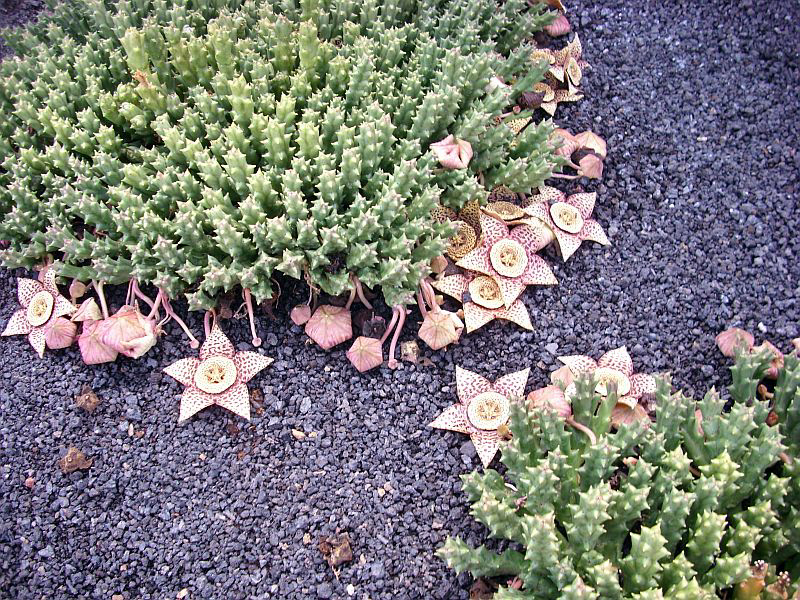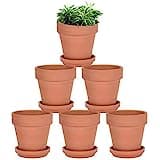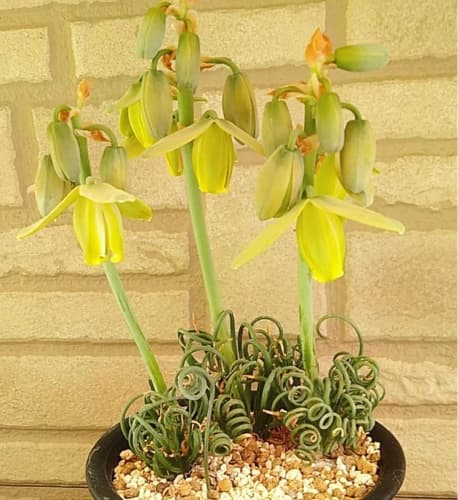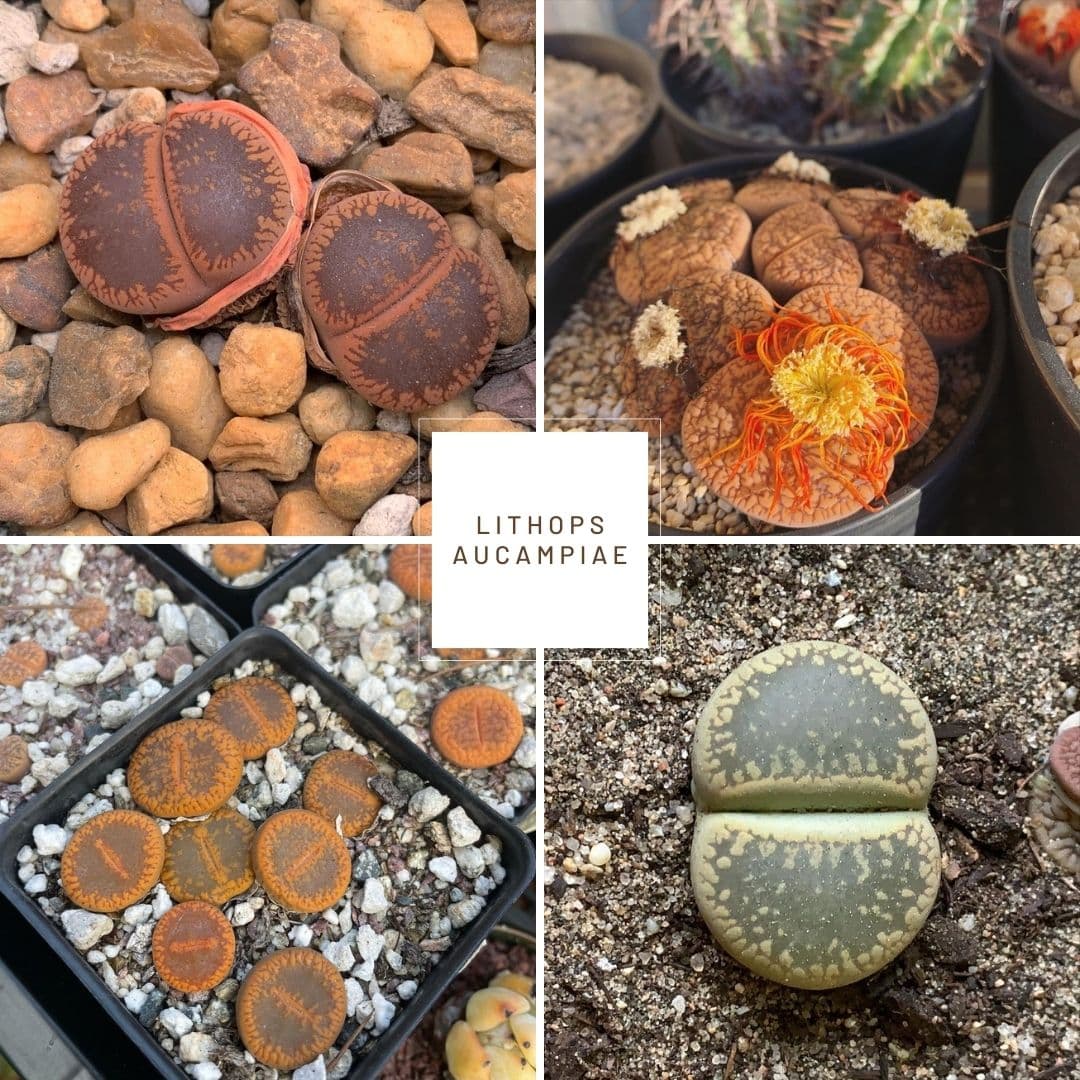Orbea Variegata
Posted by Grace on October 14, 2023
 Mature colonies of Orbea Variegata, Credit: Peter A. Mansfeld
Mature colonies of Orbea Variegata, Credit: Peter A. Mansfeld
Quick Facts
- Native Habitat: Western Cape, South Africa
- Family: Apocynaceae
- Water: Low
- Sunlight: Bright, indirect light
- Soil: Well-draining succulent mix
Contents
Why it is called Orbea Variegata?
The name Orbea is derived from the Latin word "orbis," which refers to the central raised disc or annulus found in the flowers of most species. The plants attract flies as pollinators with a pungent smell, hence the term "aasblom" or "carrion flower." The term "bokhoring" comes from the seed pods that look like two straight pods joined at the base.
"Variegata" is probably the most well-known of the species and has been cultivated the longest. It originates in the winter rainfall areas of the Western Cape, mainly along the coastal area. Another somewhat useless piece of trivia is that these plants are regarded as an alien invader in the southern parts of Australia.
The genus Orbea is probably one of the stapeliad genera that have undergone the most taxonomic changes. It was described by Adrian Hardy Haworth, an English botanist in 1812 and was later merged under Stapelia. It wasn't until 1975 when Larry Leach, a Rhodesian taxonomic botanist, resurrected the genus that most of the species were allocated to either Stapelia or Caralluma. Leach (1975) re-separated Orbea into its own genus.
Stapelia lepida is a synonym of Orbea variegata and has other nicknames such as "Carrion Cactus", "Toad Cactus", and "Starfish Cactus".
Here's a fun fact: Orbea variegata was one of the first Stapeliads to find its way into cultivation in Europe.
The Appearance of Orbea Variegata
Leaves
The leaves are typically small, thick, and triangular in shape, with intriguing patterns that can vary from plant to plant. These patterns can include mottled white, green, or reddish-brown markings that resemble the veins of a marble slab. The leaves grow in opposite pairs, giving the plant a neat and symmetrical appearance.
Flowers
While the leaves are the primary attraction, Orbea Variegata also produces striking star-shaped flowers. These blooms are often reminiscent of a five-pointed star and come in various colors, including shades of yellow, brown, and purple. The flowers are visually captivating and can be a great surprise, as they contrast beautifully with the succulent's leafy backdrop.
How to Care for Orbea Variegata
Light
Orbea Variegata thrives in bright, indirect sunlight. Place it near a sunny window where it can receive plenty of filtered light. Protect it from intense, direct sun exposure, which may cause the leaves to scorch.
Watering
One of the key characteristics of Orbea Variegata is its low water requirements. Water sparingly, allowing the soil to dry out between waterings. Overwatering can lead to root rot, so err on the side of caution when it comes to moisture.
Soil
Use a well-draining succulent mix to provide the ideal growing conditions for your Orbea Variegata. This prevents water from accumulating around the roots and helps maintain a healthy, thriving plant.
Temperature
Orbea Variegata is accustomed to warm temperatures and should be kept in a range of 65-80°F (18-27°C). Avoid exposing it to temperatures below 50°F (10°C) as it is sensitive to cold.
Humidity
These succulents don't have specific humidity requirements, and average indoor humidity levels are typically sufficient. If you live in an exceptionally dry climate, a humidity tray or occasional misting can be beneficial.
Fertilizing
Fertilize sparingly during the growing season, typically from spring to late summer. A balanced, diluted succulent fertilizer applied every 4-6 weeks is sufficient.
Pruning
Orbea Variegata doesn't require extensive pruning. Remove any dead or damaged leaves to maintain the plant's appearance and encourage new growth.
Repotting
Repot your Orbea Variegata when it outgrows its current container, typically every 2-3 years. Select a slightly larger pot with good drainage, and refresh the soil mix.
Dormancy
Orbea Variegata experiences a period of dormancy during the winter months when it grows more slowly. Reduce watering during this time to mimic its natural growth cycle.
Pests and Diseases
Orbea Variegata is generally resistant to most pests and diseases. However, be watchful for common succulent pests like mealybugs and scale insects. Treat any infestations promptly with appropriate remedies.
Need tools for succulent propagation and repotting? Here are my go-to tools: mini tool set (including syringe 💉, gloves 🧤, tweezers 🪤, dust blower 💨, tiny shovels 🛠️) and well-draining mix 🌱.Is Orbea Variegata Toxic to Pets?
This succulent is non-toxic to pets, making it a safe and attractive addition to homes with furry friends.
How to Propagate Orbea Variegata
Orbea Variegata can be propagated through stem cuttings or by collecting its seeds. Here's a quick guide to both methods:
Stem Cuttings
Snip a healthy stem, let it callus for a few days, and then plant it in a well-draining soil mix. Water sparingly and provide bright, indirect light. In a few weeks, you should see roots and new growth.
Seeds
Collect seeds from the mature, dried pods of the plant. Sow them in a succulent mix, cover lightly, and provide the same care as stem cuttings.
Where Can I Buy Orbea Variegata?
Orbea Variegata is not as common as some other succulents, but it can be found in nurseries, plant shops, and online stores that specialize in succulents. Check with your local nurseries or browse online succulent retailers to find this unique and eye-catching plant.
FAQ
Q: Is Orbea Variegata a good choice for beginners?
A: Yes, Orbea Variegata is a great choice for beginners due to its low maintenance requirements and striking appearance.
Q: How often should I water my Orbea Variegata?
A: Water sparingly, allowing the soil to dry out between waterings. Typically, this means watering every 2-3 weeks, but the frequency may vary depending on your specific growing conditions.
Q: Can Orbea Variegata tolerate low light conditions?
A: While it prefers bright, indirect light, Orbea Variegata can tolerate lower light conditions, but its growth may slow down.






